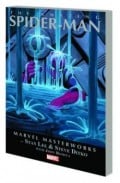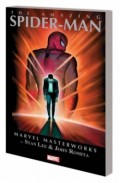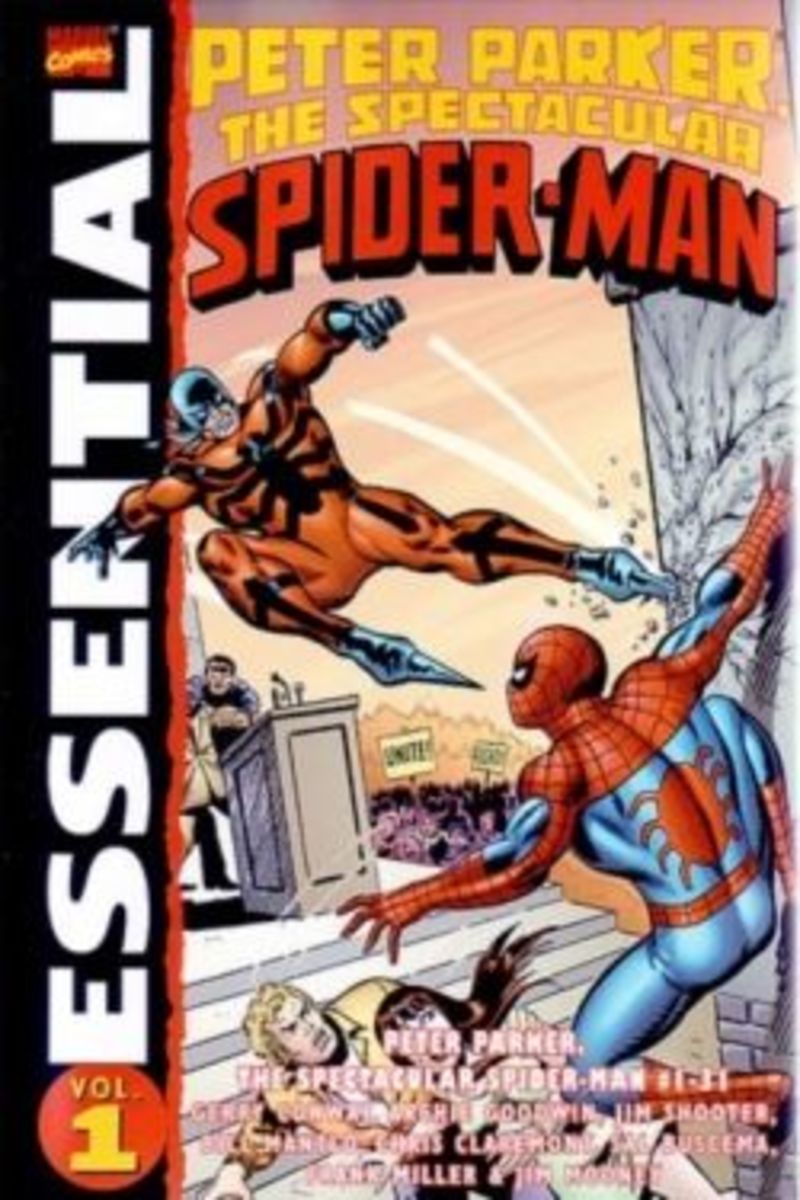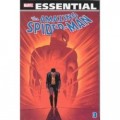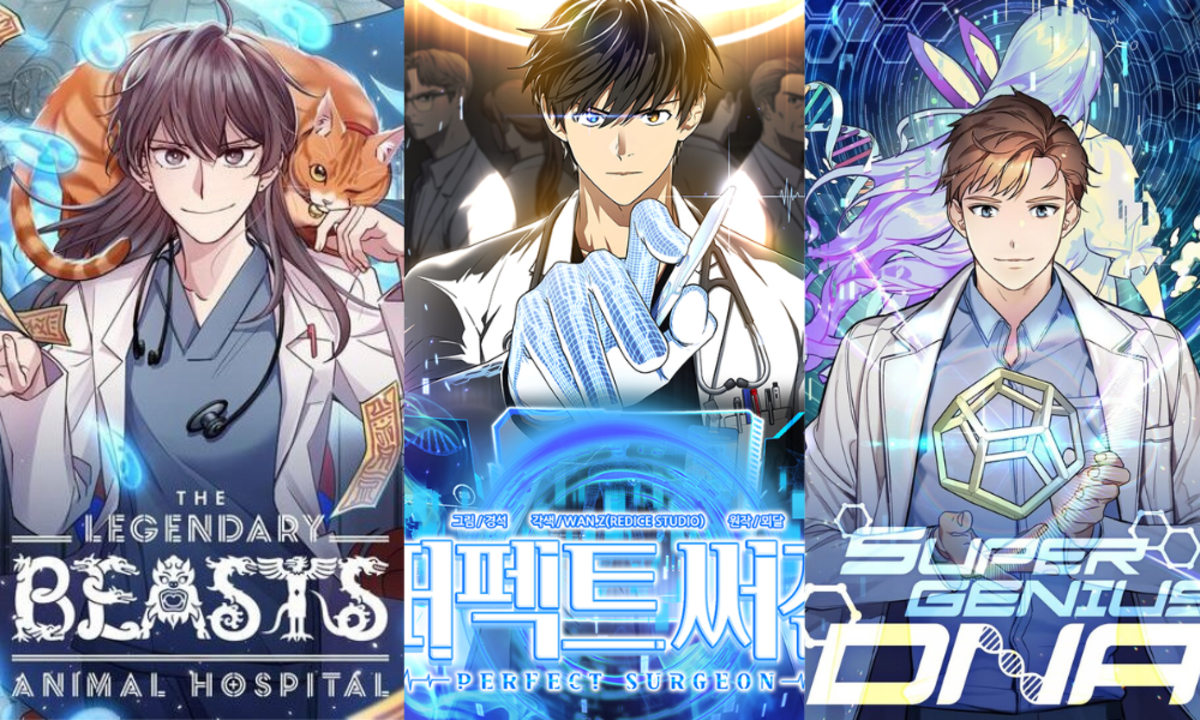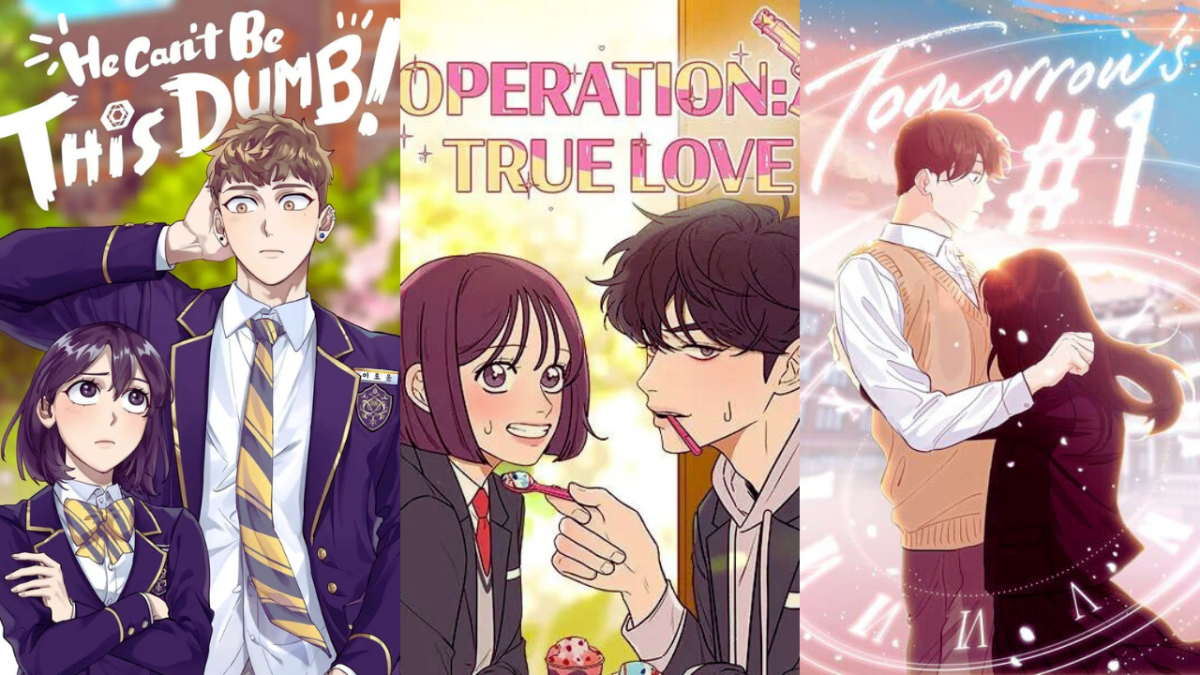Spider-Man in the Early 1970s: Green Goblin, Death and the Anti-Drug Issues
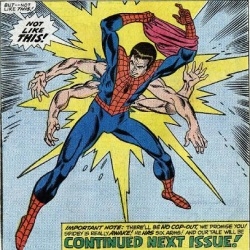
The End of an Era as Stan Lee Steps Away from His Greatest Creation!
Essential Spider-Man Volume No. 5 collects issues No. 90-113 of the original Amazing Spider-Man series. These stories, published in the early 1970s, include some issues that have become known as classics, including the death of Capt. Stacy, the anti-drug issues with the Green Goblin and the introduction of Morbius the Living Vampire.
This collection also marks a significant transition on the comic. Spider-Man co-creator Stan Lee, who had been writing the superhero's stories since his debut in 1962, stepped away from the title after issue 100. He would return to write issues 105-110, then give up the assignment for good.
Below are some of the highlights in this volume, which has the ISBN 0-7851-0881-5. Please note that the character's name is Spider-Man, with the hyphen. It is not Spiderman. The panel shown here is from issue No. 100, and if you want to find out what is happening please read below!
Buy Your Copy Today!
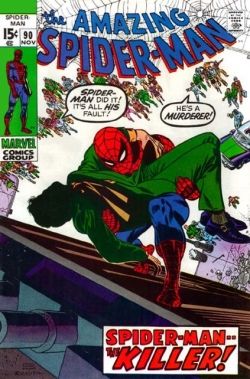
Spider-Man -- The Killer!
Death to the Father of the Woman He Loves!
This collection starts out with a bang -- the final part of a trilogy that pits Spider-Man against Dr. Octopus!
Dr. Octopus has vowed to eliminate Spider-Man once and for all, and most of this issue is just flat-out action. An early fight ends with the villain escaping, then Spider-Man putting his scientific knowledge to work to come up with a way to fight him next time.
The two meet again in a fight on a rooftop, and Spider-Man springs is secret weapon. He has devised a chemical compound that causes Dr. Octopus to lose control of his metallic limbs! In a great action sequence the two adversaries fight while dealing with the flailing of the arms.
But then disaster happens! The arms, out of control, destroy a large chimney and send the rubble down toward the crowd below. The rubble is falling toward a tiny child but Police Captain Stacy, newly arrived on the scene, is able to push the child to safety while sacrificing himself.
Spider-Man breaks off the fight to try to get Stacy to a hospital in time, but it's too late. In one of the saddest scenes in the series so far, the dying captain tells Spider-Man that once he dies there'll be no one left to look after his daughter Gwen (Spider-Man's girlfriend). ''No one, Peter ... except ,,, you.''
That catches both Spider-Man and us readers off guard, as there had been hints in past issues that Stacy suspected something but writer Stan Lee kept us in the dark until this moment.
Stacy's final words are, ''She loves you .. so very ... much.''
It's a heartbreaking scene, and another masterful storytellng job done by Lee. Spider-Man in recent issues had gotten his life in pretty good shape, so Lee must have felt it was time to shake things up. And so he did in a way that would reverberate for years.
The last scene of the book becomes even more heart-wrenching in retrospect after issue No. 121, when Spider-Man is unable to save Gwen Stacy from the Green Goblin.
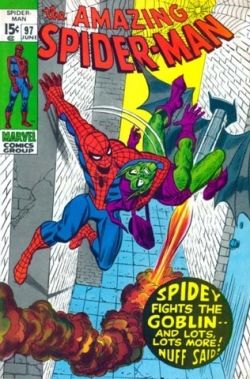
Spider-Man vs. the Green Goblin and Drug Abuse!
The Comics That Changed the Industry!
The three-issue story published in Amazing Spider-Man No. 96-98 featured the return of the Green Goblin but it's better known for tackling the social issue of illegal drug use.
The industry's self-imposed code of conduct prohibited the depiction of illegal drugs, but when the U.S. government asked writer Stan Lee to address the topic Lee enthusiastically bucked the code and with the permission of publisher Martin Goodman put out some of the first non-code approved major mainstream comics since the 1950s.
Harry Osborn, who is the roommate of Spider-man's secret identity Peter Parker, is having trouble with his girlfriend Mary Jane Watson and turns to popping pills to relieve his stress. He finally collapses and is hospitalized.
Meanwhile, Osborn's father, the amnesiac Norman Osborn, remembers he is the Green Goblin and attacks Spider-Man. The battle ends when Spider-Man forces the Goblin to confront his son at the hospital and the stress and worry about his son causes the Goblin to pass out and forget once again that he is a villain.
While I commend Marvel Comics for tackling the drug issue -- the company's actions led to a revised industry code -- I didn't much care for the resolution of the Goblin fight. Writer Stan Lee had painted himself into a corner with the Green Goblin by enabling the villain to learn Spider-Man's secret identity. Every fight had to end with the Goblin's mental collapse and it just seemed a bit strained.
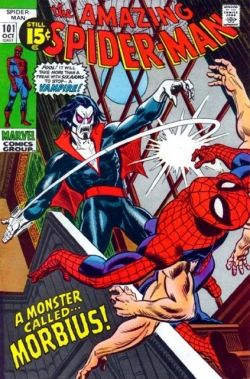
Morbius, the Living Vampire
A Landmark Issue as Lee Steps Down
Amazing Spider-Man issue No. 101 marked the end of an era, as writer Stan Lee stepped down as the regular writer of the comic book after 100 issues. As co-creator of Spider-Man, Lee had guided the superhero's adventures for almost nine years at this point while leading Marvel Comics to the number 1 position in the industry.
Roy Thomas was given the job of following Lee on Spider-Man, which must have put some pressure on Thomas. And Lee didn't make it easy because issue No. 101 was the second part of a three-issue storyline that involved Spider-Man growing an extra four arms! That was the odd result of a potion Spider-Man had taken in issue No. 100 in an attempt to eliminate his powers so he could marry his girlfriend Gwen Stacy.
In this issue, Spider-Man tries to go into seclusion until he can figure a way out of his problem -- how can he appear in pubic with four extra arms? -- but ends up confronting a new adversary called Morbius.
The comic code had been changed to allow traditional monsters just a few months before, so Thomas wanted to introduce a vampire into the series. But Stan Lee wanted a costumed villain so Morbius was created as a ''living vampire'' in a scientific experiment. Note that he appears almost in a super-villain costume.
Morbius would be defeated and Spider-Man would lose his extra arms in issue No. 102, but the villain would return and become a fairly regular second-tier character in marvel Comics. The extra arms never came back, thank goodness.
Issue No. 101 is a landmark issue for me in particular because it's the first issue I can ever remember reading. It's amazing the things you remember even after four decades!
.
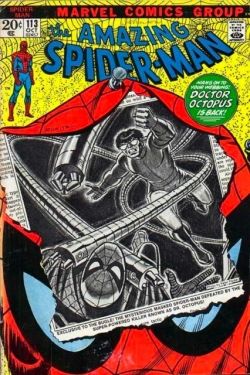
Dr. Octopus Sparks a Gang War in New York City!
While Spider-Man's Usual Troubles Continue...
This collection ends the same way it began, with Spider-Man facing the menace of Dr. Octopus!
In issue No. 112, we find out that there's gang war erupting between two crimelords in New York City, and on the last page it is revealed that one of the crimelords is Dr. Octopus. This issue showcases two fights between Spider-Man and Doc Ock and ends with the superhero confronted by the other crimelord, a new villain named Hammerhead!
Also in issue No. 113, there's a bit of comedy that highlights what made Spider-Man so special over the years -- he's always dealing with problems and indignities that other superheros don't have to face. In this case, he loses his mask during a fight with Dr. Octopus at the beginning of the book and ends up buying a cellophane one from a costume shop because he just doesn't have time to make a new one.
Even worse, the mask makes it way into the hands of Spider-Man critic J. Jonah Jameson, who also unknowingly is the boss of Spider-Man's secret identity, Peter Parker. Jameson tacks the mask onto his newsroom's bulletin board for everyone, including Peter, to see!
On top of that, it turns out Spider-Man has an ulcer -- perhaps the first superhero to develop one in the history of comics!
Dr. Octopus or Green Goblin?
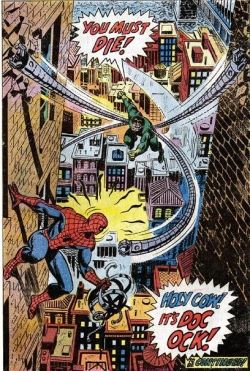
Dr. Octopus kind of receded as a top Spider-Man villain as the years went by, while the Green Goblin (with different men wearing the costume) became more of a menace.
It had been said that writer Stan lee saw Dr. Octopus as Spider-Man's greatest enemy, while the Green Goblin was the greatest enemy of Spider-Man's secret identity, Peter Parker. I always like Dr. Octopus better, mainly because the whole mental illness aspect of the Green Goblin got overplayed as the years went by.
p.s. the illustration here is from the final page of issue No. 112.
Which Villain is Cooler, Dr. Octopus or the Green Goblin?
Captain Stacy's Death From Amazing Spider-Man No. 90
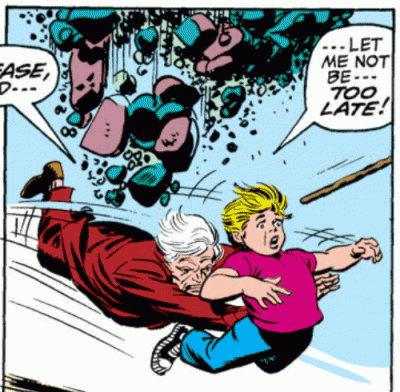
Leading Up to Capt. Stacy's Death
Get the Full Story With the Preceding Volume!
As mentioned above, Marvel Essential Spider-man Vol. 5 only contains the final part of the three-issue fight between Spider-Man and Dr. Octopus. Unfortunately, you need to get Marvel Essential Spider-Man Vol. 4 for the first two parts. We have written a review of that volume that you can read here:
Spider-Man at the End of the 1960s: The Kingpin, Black Widow and Dr. Octopus!
Marvel Essential Spider-Man volume 4 contains issues Nos. 69-89 of the original series, with writer Stan Lee putting our favorite web-slinger through some of...
Buy Marvel Essential Spider-Man Volume 4 on Amazon!
If you don't need our review above to persuade you to buy Marvel Essential Vol. 4 go ahead and click here!
Don't Forget to Buy
Marvel Essential Volumes on Amazon
The Marvel Essential series is a great for anyone who wants to read the Marvel Comics from the past don't want to spend top money to buy the original individual issues. Keep in mind that the Marvel Essential volumes reprint the original tales in black and white only, on cheap paper, to keep the costs very low, so a reader doesn't get the full experience.
Amazon has more than 600 items listed under a search for Marvel Essentials in the books category, so there probably is something available for any comic book fan!
The X-Men in the Early 1970s: Neal Adams' Dynamic Art
Marvel Essential Classic X-Men volume 3 is a real hodge-podge of stories that shows just how far below the radar screen the original X-Men had fallen in the ...
Marvel Essential Fantastic Four Comic Book Review: Dr. Doom and Daredevil Guest Star as the Legend Grows!
The Fantastic Four rocked the comic-book world when it debuted in 1961, with writer Stan Lee and artist Jack Kirby introducing more characterization and real...
Captain America in the 1960s: A Marvel Comic Book Review
Marvel Essential Captain America Volume 1 reprints Captain America's stories from Tales of Suspense No. 59-99 as well as the first three issues of the newly-...
Spider-Man in the 1970s! A Marvel Comics Book Review
The Essential Spider-Man Vol. 8 contains issues No. 161-185 of the Amazing Spider-Man series, plus Nova issue No. 12 and the Amazing Spider-Man Annual No. 11...
The Ghost Rider Debuts! A Marvel Comic Book Review
The Marvel Essential series contains four volumes devoted to the Ghost Rider superhero, who first appeared in 1972 in a comic book called Marvel Spotlight. H...
The Fantastic Four Debuts! A Marvel Essentials Comic Book Review
The Essential Fantastic Four Volume 1 contains some of the most important stories that Marvel Comics ever published. This book contains the first 20 issues o...
Hulk in the 1970s! The Rampaging Hulk Marvel Essential Comic Book Review
Marvel Essential: The Rampaging Hulk 1 is a collection of Hulk stories from his short-lived late 1970s magazine. This volume includes the tales from issues 1...
Marvel Essential Fantastic Four: Galactus, Silver Surfer and the Black Panther Debut!
Marvel Essential Fantastic Four Vol. 3 contains perhaps the most-sustained run of great comic book stories of the 1960s. This collection of Fantastic Four No...
Essential Iron Fist: A Marvel Comic Book Review!
Essential Iron Fist Volume 1 collects the first four years' worth of Marvel comics starring the character, who debuted in 1974 during a martial arts craze. T...
Spider-Man's Earliest Adventures: A Review of Marvel Comics' Essential Spider-Man Vol. 1
Marvel Essential Spider-Man Volume 1 contains the debut story of Marvel Comics' most-popular character, who first appeared 50 years ago in the summer of 1962...
The Avengers in the Late 1960s: A Marvel Comics Review!
Marvel Essential: Avengers Vol. 3 contains issues 47 to 68 of the comic's original series, as well as Avengers Annual No. 2. For the most part this collectio...
Peter Parker, The Spectacular Spider-Man: A Review of the 1970s Marvel Comics Series!
Peter Parker, The Spectacular Spider-Man first appeared at the end of 1976, and was a comic book aimed at cashing in on the growing popularity of Spider-Man....
Marvel Essential X-Men Comic Book Review: Wolverine, Storm and a Return to Greatness!
Marvel Essential X-Men collects Giant-Size X-Men 1 and X-Men 94-119. Giant-Size X-Men No. 1 introduced the new team of superheroes, reviving the X-Men comic....
Captain America's 1960s Adventures in Color: A Marvel Comics Review
Marvel Masterworks: Captain America Volume 1 reprints the superhero's adventures in Tales of Suspense No. 59-81 in full color. This was Captain America's fir...
Marvel Masterworks X-Men Comic Book Review: Enter the Phoenix! Plus Wolverine, Storm and Nightcrawler!
This volume reprints Uncanny X-Men No. 101-110 in full color, a collection of 10 comics during a run that really established the new X-Men as a major franchi...
The Mighty Thor Debuts: Highlights of His First Marvel Masterworks Collection
Thor, one of Marvel Comics' mightiest heroes, debuted 50 years ago in a comic book called Journey into Mystery. One of the Marvel Universe's earliest charact...
X-Men Reborn in the 1970s: Storm and Nightcrawler Debut, plus Wolverine!
Marvel Masterworks: The Uncanny X-Men Vol. 1 highlights the rebirth of the team in 1975-1976, reprinting Giant-Size X-Men No. 1 and X-Men No. 94-100. Promote...
The Amazing Spider-Man Debuts! A Marvel Masterworks Comic Book Review
Marvel Comics began publishing its Marvel Masterworks series in 1987 with The Amazing Spider-Man Vol. 1, among others. Since then the company has come out wi...
The Avengers Debut! A Comic Book Review of the Marvel Masterworks Collection!
The Avengers Volume 1 was one of the first four collections when Marvel Comics began publishing its Marvel Masterworks series in 1987. Since then the company...
Darwyn Cooke's DC: The New Frontier Comic Book Review
DC: The New Frontier was a series of six comic book issues in 2004 that focused on the 1950s, when many of the major superheroes that populate the modern DC ...
Gene Colan, Comic Book Artist: An Appreciation
Gene Colan developed such a moody, cinematic style during his six decades as a comic book artist that his work was as easily identified as the art of Jack Ki...
X-Men's Dark Phoenix Saga: A Marvel Comic Book Review
X-Men: The Dark Phoenix Saga collects issues No. 129-137 of the original X-Men comic-book series, a series of tales that ends with the final battle over Jean...
Spider-Man Co-Creator Steve Ditko: Strange and Stranger Book Review
Strange and Stranger: the World of Steve Ditko was published in 2008 by Fantagraphics Books. Author Blake Bell traces the life story of this legendary and re...
Daredevil Visionaries: Frank Miller A Marvel Comic Book Review of The Complete Elektra Saga!
Daredevil Visionaries: Frank Miller Vol. 2 collects issues 168-182 of the original Daredevil series. Issue 168 was the first comic of the series that Miller ...
Joe Kubert, Comic Book Artist: An Appreciation
Comic book artist Joe Kubert died on Aug. 12, 2012, after more than seven decades of drawing and creating comic books. Over those many years he worked on a w...
Geppi's Entertainment Museum in Baltimore: A Tourist's Guide to Comic Book Heaven!
Geppi's Entertainment Museum is located in Baltimore and is dedicated to all sorts of American pop culture: comic books, television, radio, movies, magazines...
New York Comic Con Anime Festival: A Comic Book Fan's Review!
The New York Comic Book Convention occurred Oct. 13-16, 2011, and coupled with the New York Anime Festival, drew more than 100,000 comic-book fans, video gam...
Growing Up With Spider-Man: The Day Gwen Stacy Died
Spider-Man's girlfriend, Gwen Stacy, died 40 years ago this summer, marking the end of one era in comic books and introducing a realism into the lives of sup...
We hope you enjoyed reading this review as much as I enjoyed revisiting the old comic books of my youth. Please let us know what you thought of this review, Spider-Man, or comic books in general.
Thanks for visiting!



